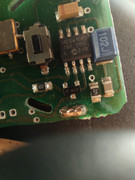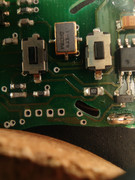Hello everyone! as the newbie i am, for my first post i’ve a question and not a contribution.
btw, I want to thank the devs for such a great job with this amazing device.
I am trying to decode my garage door remote, it uses 433.92 hz modulation AM270, when I use the “read” option, every time i press the button it detects a code, but seems to be Keeloq codes (Dynamic/Rolling codes if i am correct)
Most of the codes it detects are “KL Unknown [hexa code]”, only a few codes have the MF: as Leopard, Mutancode, Reff, etc.
Seems like the Save option is not available for any of these codes.
Is it because current version can’t decode the protocol my remote uses to generate new codes?
Are you planing to enable the option for these kind of codes in the future?
I can provide the raw data and try to get more info about the remote. Would that help on anything?
Thanks!!






